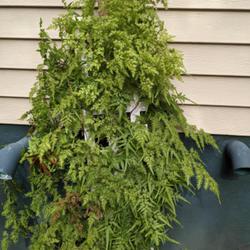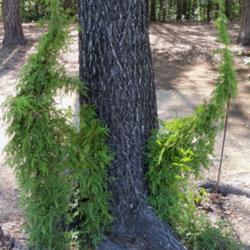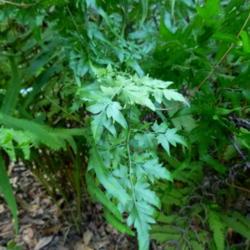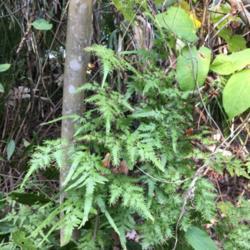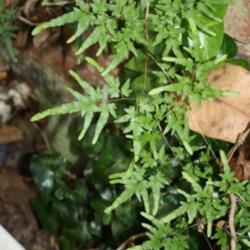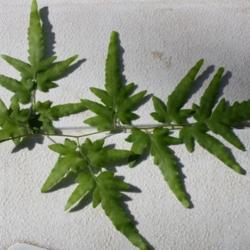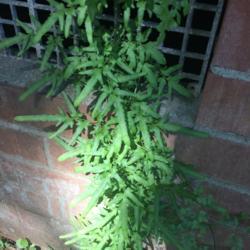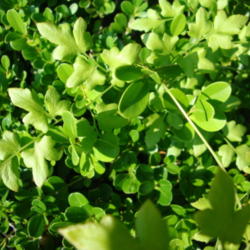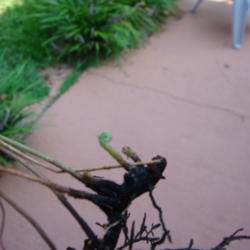| Plant Habit: | Fern Vine |
| Life cycle: | Perennial |
| Sun Requirements: | Full Sun Full Sun to Partial Shade Partial or Dappled Shade |
| Water Preferences: | Wet Wet Mesic Mesic Dry Mesic Dry |
| Minimum cold hardiness: | Zone 7a -17.8 °C (0 °F) to -15 °C (5 °F) |
| Maximum recommended zone: | Zone 10b |
| Plant Height: | to 90 feet |
| Plant Spread: | it can smother entire trees |
| Leaves: | Evergreen Semi-evergreen Deciduous Other: Evergreen to deciduous depending on zone. |
| Flowers: | Other: None |
| Flower Color: | Other: N/A |
| Underground structures: | Rhizome |
| Uses: | Will Naturalize |
| Resistances: | Tolerates dry shade Humidity tolerant Drought tolerant |
| Propagation: Seeds: | Other info: spores maturing usually in November --- self sows freely |
| Propagation: Other methods: | Division Stolons and runners |
| Containers: | Suitable in 1 gallon Suitable for hanging baskets Needs excellent drainage in pots |
| Miscellaneous: | Tolerates poor soil |
